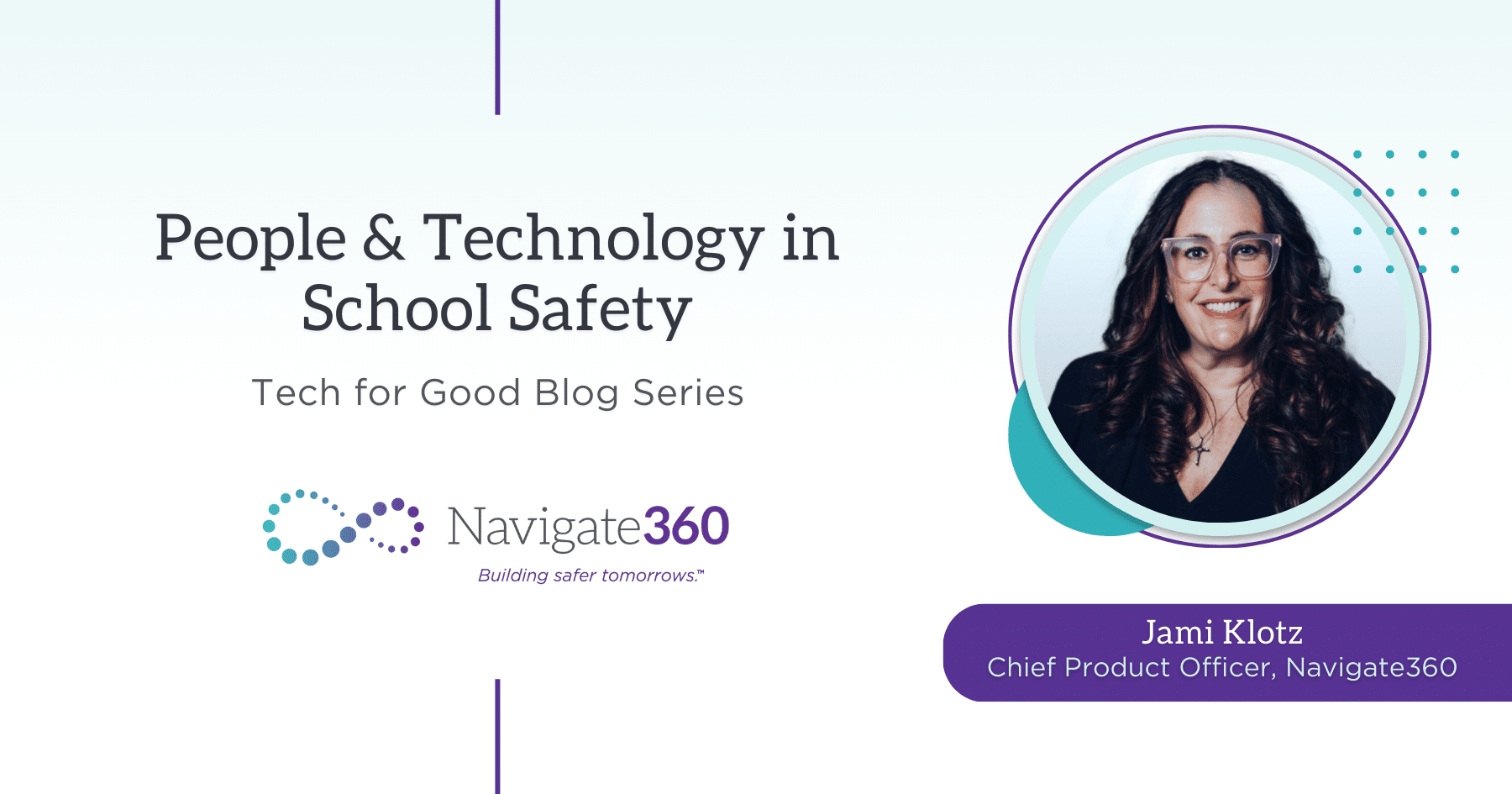By: Jami Klotz, Chief Product Officer, Navigate360
Part 4 of a 6-Part Series
In our ongoing exploration of the positive impact of technology, we take a closer look at the role of people and technology in school safety. While it’s tempting to focus solely on the hardware and video capabilities enhancing security, we acknowledge the need to address the essential human aspect of utilizing technology effectively. In this installment, we shift our attention to the intersection of technology, data, and the human factor in ensuring the safety of our schools.
The Importance of Data Awareness and Education
Despite the existence of safety protocols and data privacy standards in every state in the US, the knowledge and awareness of these guidelines remain a challenge. We often spend considerable time debating the use of data rather than emphasizing its critical importance. Incident management and emergency response demand a solid understanding of who is in a building during an extreme situation. This is where technology can play a pivotal role.
Enhancing Building Security: The Power of Data
While many schools still allow students and faculty to enter without verification, there are technological solutions, like scanning protocols, that can significantly enhance security. Tracking entries and exits may raise concerns about privacy, but similar data is willingly shared on platforms like Find My iPhone or Life360. Knowing who is in a building during emergencies is crucial for first responders, family notifications, and overall incident management. These types of protocols also allow us to ensure we do not have unwanted visitors in our schools. Scanning people in and verifying who is in the building creates a much safer environment for the entire community.
“The amount of data collected every time someone enters or exits a building is a key component of ensuring safety and facilitating effective emergency response.”
Dr. Emily Rodriguez, Cybersecurity Expert.
Cameras and Real-Time Decision-Making
Adding cameras to the equation brings another layer of data. The often-raised concern about privacy invasion needs to be balanced with the potential benefits of data collected from videos. In the event of an extreme incident, real-time data from both scanning protocols and cameras can empower decision-makers to respond intelligently. It can allow AI to create evacuation plans based on data of check ins, mapping intelligence and number of people in certain parts of the building.
When incidents occur, people need assistance to ensure they react quickly and responsibly. Seconds matter, and data and AI can help make those valuable seconds more productive, ensuring actions can be taken and measured. If cameras can show where an active incident in a school is occurring, it helps leaders understand who can/should lock down, versus who can safely evacuate. This also helps first responders know where to enter a building to maximize their time to deal with the incident.
People and Training: A Critical Partnership
As technology evolves, it’s crucial to recognize that people and training are key to making technology work effectively. Even with advanced security measures, a single person leaving a door propped open can compromise the entire system. Similarly, having sophisticated video systems won’t be beneficial if individuals are unaware of evacuation procedures or where to go during an emergency.
Technology, no matter how advanced, cannot mitigate all people-related factors. Education and training play a pivotal role in ensuring the optimal use of technology for safety. Recently, in the DOJ report and the summary of the report on Uvalde, it is highly noted that even when technology in place works, the human element can still fail. The fact that technology can indicate warning signs of self-harm or harm to others only helps if you have a case management system. If you have an emergency system but do not practice how to react or do not include your local law enforcement in your drills to ensure you are all in sync, then the issue becomes larger than technology.
Towards a Safer Future: Integrating Technology and Education
When we look at all the technology around us, we worry about how it could be used negatively. However, I’d like to challenge you to spend far more time ensuring we all know how to use technology for the betterment of our communities.
While the technology exists to provide virtual walkthroughs and enhanced training experiences, we are not yet fully utilizing these tools in our day-to-day routines. As each year passes, our comfort with technology and data collection grows. Using these resources for good and educating our communities on how to respond to technology-driven safety measures should remain a primary focus.
In the ever-evolving landscape of technology, our ability to leverage insights, ensure safety, and respond effectively to incidents is dependent on the synergy between advanced systems and well-informed individuals. As we continue this Tech for Good journey, let’s embrace the responsibility of educating our communities and optimizing the potential of technology through data sharing for a safer and more secure future.

About the Author
Jami Klotz
With over 20 years of experience in product leadership, Jami Klotz has been at the forefront of advancing big data and software products. Her expertise has helped organizations and consumers turn data into actionable insights, while leading both Product and Tech organizations through rapid growth and change in the private equity industry.
Before joining Navigate360, Jami served as Senior Vice President of Product at BigTime Software, one of Inc. 5000’s fastest-growing private companies. There, she built applications used by 2,000 firms to process $4B in billings. Jami’s career spans across several companies that include Travelclick, Orbitz, and nSight Travel Intelligence where she served as President and Chief Product Officer. Throughout her career, she has driven strategic growth, cultivated a strong brand image and defined cohesive and integrated roadmaps driven by market needs.
Jami has been a featured speaker globally on the use of big data in revenue optimization and the use of data to increase value to customers. She believes transparency and team development are key to maximizing results for all stakeholders.
Outside of her professional achievements, Jami has a strong sense of family and community. She currently resides in the suburbs of Chicago with her husband and three children. Outside of family she enjoys volunteering with groups supporting women in need as well as hiking and exploring new destinations.




